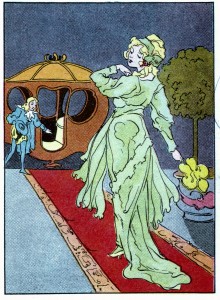
I collect vintage images–illustrations, as it were. Have for over 40 years. Paper ephemera, books, sheet music, postcards, Halloween, greeting cards, bridge tallies, you name it, if it’s illustrated art–I collect it. And on flickr I found a community of others just like me. I began sharing this collection as I continued making vintage illustration jewelry from my collections, and from things I found floating around on the fabulous internet. And, from some things I found on flickr-that was downloadable and in the public domain. What does that mean? I can only speak for the United States, because other countries have different laws, but, anything, anything printed before 1923 is in the public domain. Which means they are not protected or owned by any individual. I checked this over and over again, due to problems that occurred on flickr when I had the audacity to explain that I was going to start a digital download business, and that there was a slim possibility that some images from flickr streams may get into my business–inadvertently. I am nothing, if not stupid enough to be honest about what I am doing. This started a mini firestorm of flickr morality. And supposed legal questions. And here’s the point of this post.
People who own vintage pieces, antique books, postcards etc., who scan them, and post them on the internet–AND these images are in the public domain, cannot expect these images to be ‘owned’ by them. When I was a newbie there-I became incensed when I found things I had on my stream, on someone else’s stream. This is not cricket. There are guidelines within these types of things, and the rules are you don’t take from someone and then publish on your stream. Well, I brought this terrible crime to the attention of the discussion boards, and they literally laughed at me. First–flickr is mostly for photos, and the guidelines also state that nothing that does not originate with the poster is allowed up–well that would wipe out the entire vintage art section of flickr–not that it amounts to much in
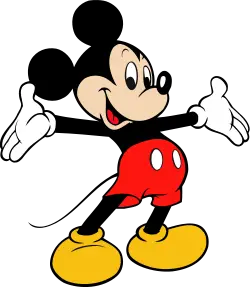
comparison to photography. So, I ignored that point posed to me. But they kept reiterating over and over that it didn’t matter whether or not it was on my stream, that I scanned, restored, posted said pieces–if in the public domain, I cannot claim ownership. Not even if altered. So, even if pinterest took my entire stream and has thrown it across the vast internet tubes, I have no recourse–because I don’t own the artwork to begin with. So, armed with this reality, I saw how my 15,000 images were being taken and used for commercial purposes. And I thought, well, hell! Why don’t I use what I have acquired via my physical collection, and my virtual one, and restore and sell, just as thousands of others are doing? By this time in my collections–I couldn’t tell you which of my images were from piles and piles of paper, and which I found at downloadable websites, booksites, or less likely, other flickrites stuff. Because of this, a couple of flickrites label me and others like me as ‘pilferers’ thieves, and insist that because they have some images up on their streams, they have become copyrighted. Some also believe that if one pays a lot of money for a book, and scan the plates, put them up on the internet–no one should take and sell them, because they spent money on said piece. And time. And if available to the masses, no one will ever want to buy an antique illustrated book again.
Well, yes, it is a pain to have worked hard at restoring an image and then seeing it being sold elsewhere. Downright infuriating. Mostly because I didn’t do it first. Because no matter how one would love to claim ownership to something uploaded onto a public site, unless originated by you, you don’t own it. There is discussion and differing opinions about altering an image, and if the resulting image can be then copyrighted. Apparently, if you change the image enough, you can copyright the alterations, but
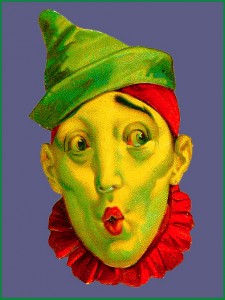
just those aspects–which is confusing to me. So, that means, what? If you take an Arthur Rackham and change the coloring–no dice. But if you take the same image, and paint mustaches on the elves–the mustaches are copyrighted? I need more clarification on that point. What I do to original public domain images does not constitute altering enough for me to claim ownership. I restore cracks, cuts, tears, holes in book jackets or art plates. I don’t change them radically enough to be considered new works. And, I wouldn’t want to. Simply uploading something you own does not make it a copyright image if in the public domain. That much is fact checkable.
Clearly, this doesn’t and never will apply to anything not in the public domain. Which is absolutely set in concrete stone–anything published after 1977 is copyrighted, period, period period. Anything Disney, is copyrighted–just ask the little preschool who thought it would be cute to paint some Disney characters on
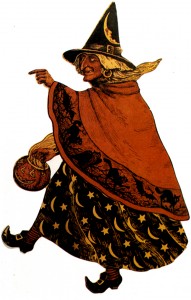
their walls. Just ask those at a jewelry accessories show who had used some of Disney’s images in their work–a rep from Disney was walking around the entire wholesale arena, pulling anything that smacked of a large mouse ear. This is a no brainer. But you’d be amazed at how many people will post illustrations on flickr from brand new books, and then whine about people taking those pictures from their stream and post elsewhere. If you are posting copyrighted material, you are in la la land if you believe it will not be taken by clueless individuals. My answer to that–never put anything up that’s remotely new. Easy peasy. I’m not in any way excusing people taking copyrighted material, I’m just saying if you don’t want someone eating your pie, don’t put it on a public picnic table in the middle
of a vast park. There is the Fair Use clause–which allows limited posting of copyrighted material for ‘educational purposes.’ Ok. But just because legally you can put something up under this clause, doesn’t mean that idiots are going to understand the fine print and not take it and put it elsewhere. Again, I avoid this problem by not posting anything new.
The internet has opened up many issues regarding what is and isn’t usable. But it shouldn’t take a rocket scientist for Americans to understand that anything after 1923 may not be in the public domain. And I use may, because apparently the overwhelming majority of illustrations were not copyright renewed. Why? Maybe because to do so took remembering a really wacky arbitrary year –28th after original copyright–when you were required to renew the copyright or forfeit your rights. Very few people did so. “According to a 1961 copyright office study, fewer than 15 percent of all registered copyright holders renewed; for books and other texts, the percentage is half that. So, chances are, up until a certain year, that illustration is copyright free. But to be certain, there are books and places to help you find out.”
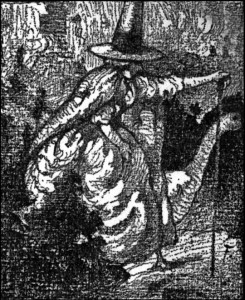
So, why does this matter? Because the entire argument seems to me to be one of the past vs. the present. At one time, people who scrimped and saved or were wealthy enough to afford antique books, were the only ones privileged to see the brilliant illustrations within. There was a sense of ownership. sort of like the art fanatic who has a stolen painting behind a wall in their library that only they have the ability to see. Now, these same book plates are everywhere–including my rare The Ship That Sailed to Mars–Dover has reproduced a lovely facsimile of the original, and that’s wonderful. Even though there was a twinge of, ‘bummer–now we don’t own something so rare’ it quickly passed, because we don’t own it. We have possession of it, we get to gaze at it whenever we please, but those illustrations are part of the ages, and those who come after us will be able to do as we did, and not own them either. And that’s the way it should be.
http://en.wikipedia.org/wiki/File:PD-US_table.svg
| Before 1923 | None | None. In the public domain due to copyright expiration |
| 1923 through 1977 | Published without a copyright notice | None. In the public domain due to failure to comply with required formalities |
| 1923 through 1963 | Published with notice but copyright was not renewed8 | None. In the public domain due to copyright expiration |
http://copyright.cornell.edu/resources/publicdomain.cfm
Can you claim copyright to a derivative work? An argument, not a definitive answer.
